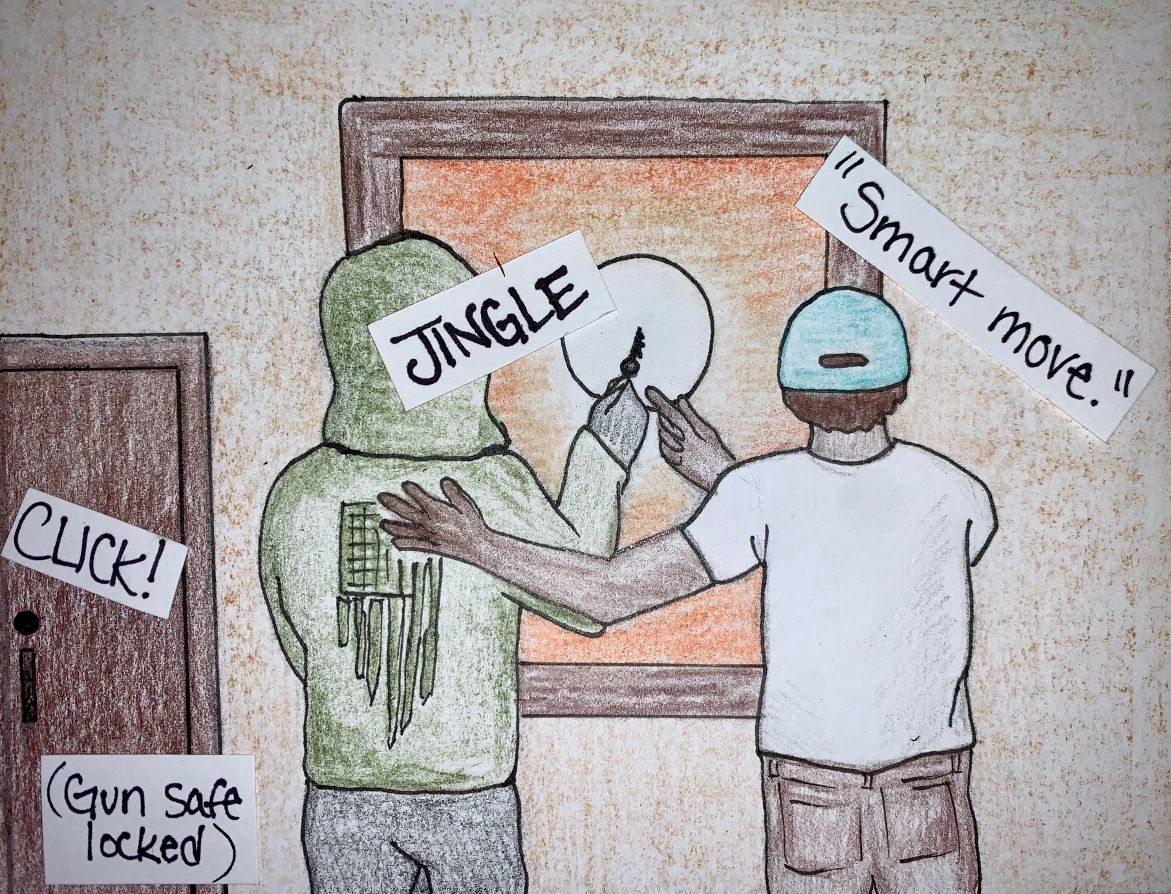Firearm safety is key to veteran suicide prevention – here's why
Part 4: We have to talk firearm safety when we cover veteran suicide prevention.

This story discusses multiple means of suicide. If you are in crisis or helping someone in crisis, the National Suicide Prevention Lifeline has certified listeners on call: 9-8-8.
Suicide is a complex issue that rarely comes down to just one thing. Signs that a person is considering suicide can be difficult to spot, however, homelessness, chronic pain, substance abuse and difficulty transitioning into civilian life are risk factors for veterans, according to the U.S. Department of Veterans Affairs.
Another risk factor: knowledge and ownership of firearms.
Nearly 50% of current or former military members own at least one firearm, compared to 22% of the rest of the population nationally, according to the Center for American Progress, a nonpartisan, progressive think tank.
Statistics have shown that in areas of higher gun ownership, deaths by suicide with a firearm increase. Precise numbers on gun ownership can be difficult to exact, however data from the Department of Justice shows that Minnesota has a rate of nearly 43% of the population owning firearms, compared to the national average of 32%.
Firearms were used in 69% of veteran suicide deaths in Minnesota, compared to 48% of Minnesota civilian suicides, according to the National Veteran Suicide Prevention annual report conducted by the Office of Mental Health and Suicide Prevention and the U.S. Department of Veterans Affairs. Nationally, 72% of suicides among current or former members of the military were carried out with a gun in 2019.
This story is part four in a series on veteran suicide and prevention. Previous editions covered the importance of asking a person in crisis if they're considering suicide and connecting them to resources. This edition highlights the value of creating a plan to put time and distance between a veteran and a potential, lethal means to suicide.
As part of their “lethal means safety” effort, the VA teaches veterans and their caregivers how to put time and distance between themselves and the method they're planning to use for suicide, said Ann Fleming, suicide prevention coordinator at the St. Cloud VA Health Care System.
“When people decide to act, 75% of the time it is within an hour,” Fleming said. “Twenty-four percent of the time it is within five minutes. Putting time and distance between the person and the object is important. It gives them time to pause in a crisis.”
Lethal means safety is an effort promoted by the U.S. VA to stop veteran suicide. In Minnesota, all 87 counties have coalitions that teach ways to ensure veteran safety in a crisis. Find tips for lethal means safety here.
Medical professionals at the VA have increased conversations with veterans about their access to firearms and medications, how they are stored and how they can help, Fleming said. Often this means brainstorming ideas that work best for the individual, including finding ways to send extra medications back to the VA and providing gun locks.
Since 2019, the Minnesota Department of Veterans Affairs has given away over 1,500 gun locks to veterans.
There is evidence that when a firearm is locked up, the veteran in crisis will likely not try another means for suicide, according to research citied in Suicide Prevention is Everyone’s Business: A Toolkit for Safe Firearm Storage in Your Community.
Because the acute risk of suicide is often measured in minutes, using a cable lock, gun case, lock box or gun safe can significantly reduce the risk of death by suicide.
From crisis to long-term support
“We want to focus on ways to ensure safety in the event of a crisis,” said Laura Stumvoll, community engagement coordinator at the St. Cloud VA. This means being very intentional in conversations providers and others have about lethal means.
Stumvoll said the VA has ongoing conversations with veterans about what kinds of potentially harmful objects they have (firearms, pills, etc.), how they are stored and what ideas they have about limiting access. Often this means tapping a partner, such as a responsible friend, to help with storing items.
“We get creative,” Fleming said. “We have these conversations with all veterans, not just those considered at risk.”
Follow-up care is a standard practice for the VA, meant to engage veterans regularly and gauge how things are going. This could mean daily or weekly phone calls to check in, pre-scheduled appointments for follow-up on meds or involvement in support groups and other programs. Care coordinators work with individuals to help manage their ongoing needs.
“Mental health checkups are really important,” said Fleming. “Even if you’re doing well, you still need to stay on top of it.”
Resources
Community Based Outpatient Clinics are operated in 14 Minnesota communities and provide mental health services, acute and chronic medical condition management and pharmacy services.
Vet Centers, operated by the VA Readjustment Counseling Service, are located in Anoka, Duluth and St. Paul. Vet Centers provide free non-medical readjustment counseling to combat veterans and their families.
Post 9/11 veterans are also able to access connections with other veterans and their families with organizations like the Wounded Warrior Project. The Wounded Warrior Project has programs including financial education, family support, mental health support, adaptive sports, job support and peer support.
The Beautiful Mind Project offers Urgent Care for Mental Health in person in St. Cloud and via telehealth visits for anyone in Minnesota. The project connects those in crisis with a mental health professional within 24 hours. Its mission is to make mental health care more accessible at the time it’s needed.
Each county in Minnesota has a Veterans Service Office set up to assist veterans and their families with services including advocacy, counseling, claims assistance and other special programs.
Support after the loss of a veteran to suicide is available through the federal and Minnesota VA departments. Learn more here.
Take an online course in suicide intervention through PsychArmor.
Search for safeTALK and ASIST training by location through the LivingWorks site.
For those in other high risk groups or supporting different populations, 988lifeline.org has resources on Black mental health, LGBTQ+ support, maternal mental health and other groups.
This story was originally published in the Project Optimist newsletter on September 28, 2022.
About the project

This project on veteran suicide prevention was developed and led by Janelle Bradley. Explore the whole series.
Part 1: I lost a veteran to suicide, so I went on a search for preventions that work
Part 2: The VA helps prevent suicides with a process that starts with a question
Part 3: Here's where to get connected after launching a veteran suicide intervention
Part 4: Firearm safety is key to veteran suicide prevention – here's why
An illustrated intervention: Helping a veteran in crisis
Series page | Veteran suicide prevention: From a personal story to solutions
